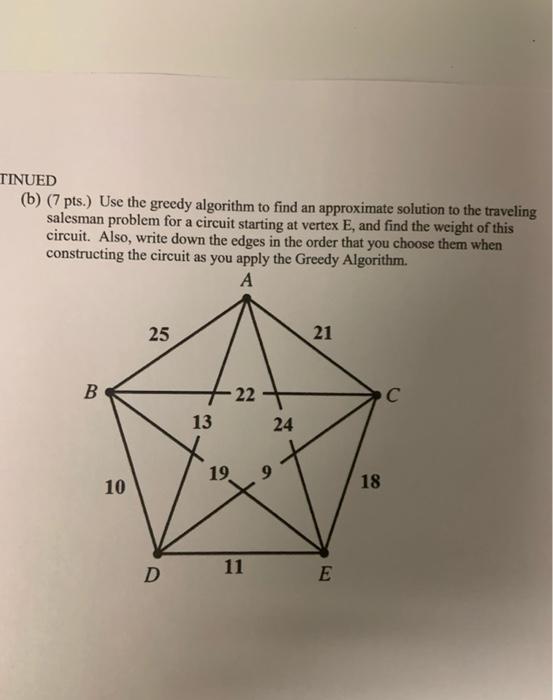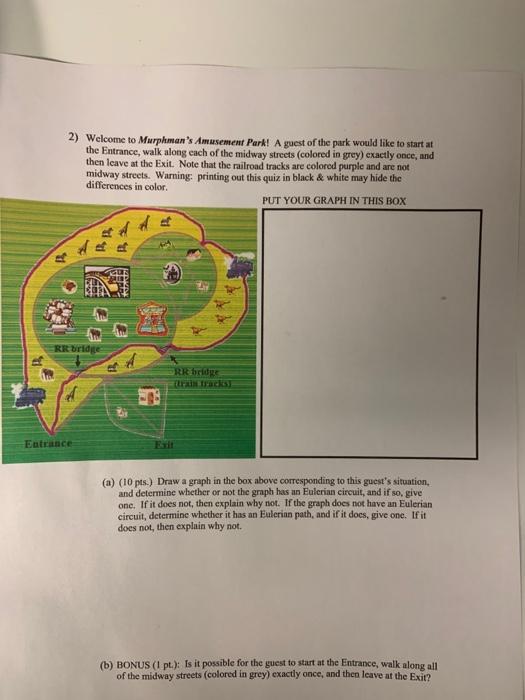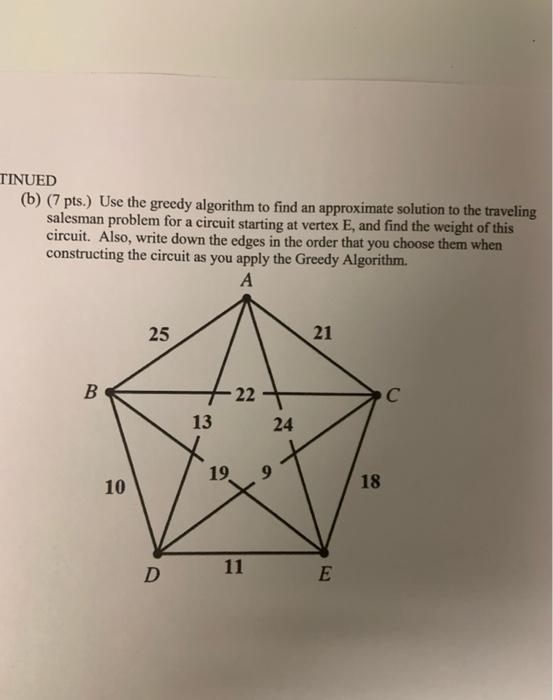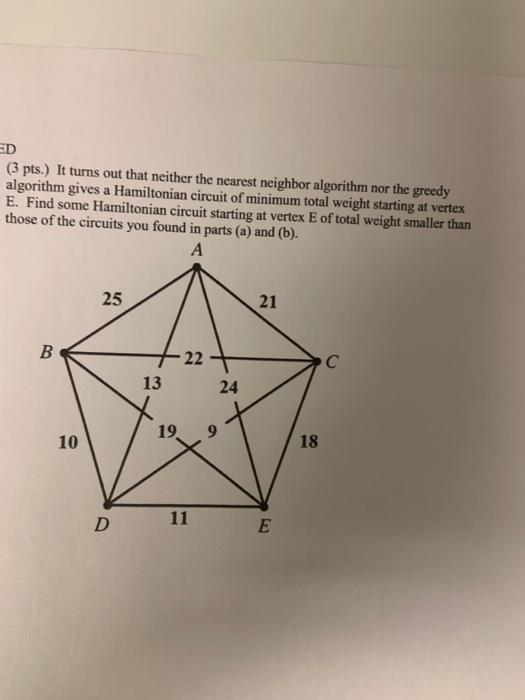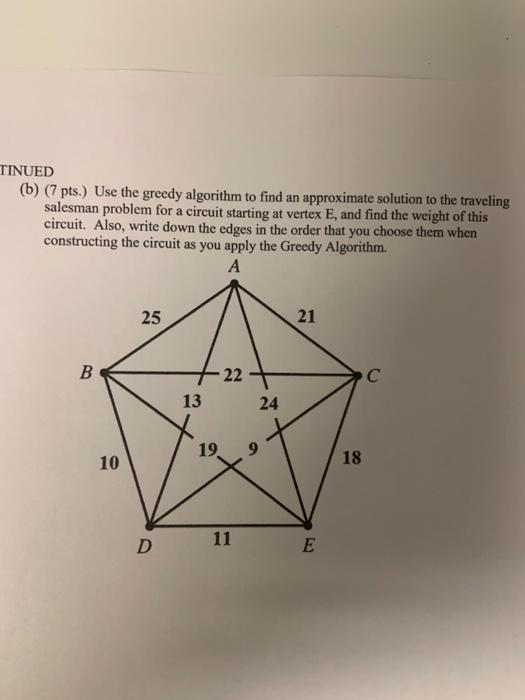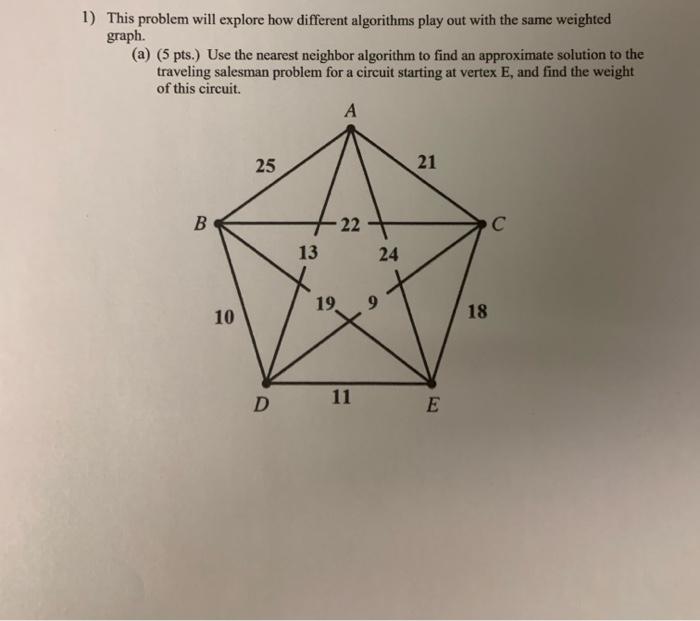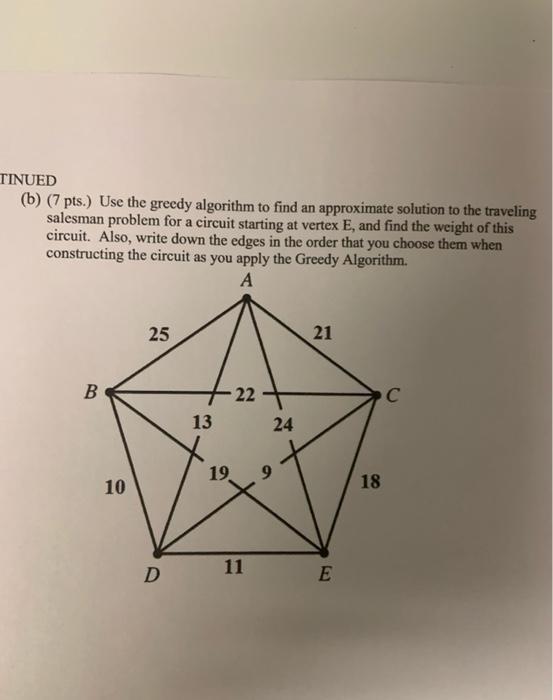TINUED (b) (7 pts.) Use the greedy algorithm to find an approximate solution to the traveling salesman problem for a circuit starting at vertex E, and find the weight of this circuit. Also, write down the edges in the order that you choose them when constructing the circuit as you apply the Greedy Algorithm. 25 21 B -22 IC 13 24 19 10 18 D 11 E 2) Welcome to Murphman's Amusement Park! A guest of the park would like to start at the Entrance, walk along each of the midway streets (colored in grey) exactly once, and then leave at the Exit. Note that the railroad tracks are colored purple and are not midway streets. Warning: printing out this quiz in black & white may hide the differences in color PUT YOUR GRAPH IN THIS BOX Redrid RR brides La Tracks Entrance (a) (10 pts.) Draw a graph in the box above corresponding to this guest's situation, and determine whether or not the graph has an Eulcrian circuit, and if so, give one. If it does not, then explain why not. If the graph does not have an Eulerian circuit, determine whether it has an Eulerinn path, and if it does, give one. If it does not, then explain why not. (b) BONUS (1 pt.): Is it possible for the guest to start at the Entrance, walk along all of the midway streets (colored in grey) exactly once, and then leave at the Exit? Provide all of your work and answers in the spaces provided. However, you may attach additional work if you want to. Show all work for full credit. Your submitted quiz should not be a rough draft. You are allowed to seek out help from the Math Support Center, study groups, and/or the class instructor, but you must submit only your own work: do not copy! Remember, even though you may work with other people, you are graded individually. Write up your final draft by yourself and in your own style. Your work/responses must be your own. There are four printed pages to this quiz. 1) This problem will explore how different algorithms play out with the same weighted graph. (a) (5 pts.) Use the nearest neighbor algorithm to find an approximate solution to the traveling salesman problem for a circuit starting at vertex E, and find the weight of this circuit A 25 21 B 22 C 13 24 19 10 18 D 11 E TINUED (b) (7 pts.) Use the greedy algorithm to find an approximate solution to the traveling salesman problem for a circuit starting at vertex E, and find the weight of this circuit. Also, write down the edges in the order that you choose them when constructing the circuit as you apply the Greedy Algorithm. 25 21 B -22 IC 13 24 19 10 18 11 D E ED (3 pts.) It turns out that neither the nearest neighbor algorithm nor the greedy algorithm gives a Hamiltonian circuit of minimum total weight starting at vertex E. Find some Hamiltonian circuit starting at vertex E of total weight smaller than those of the circuits you found in parts (a) and (b). 25 21 B 22 C 13 24 19 9 10 18 D 11 E TINUED (b) (7 pts. Use the greedy algorithm to find an approximate solution to the traveling salesman problem for a circuit starting at vertex E, and find the weight of this circuit. Also, write down the edges in the order that you choose them when constructing the circuit as you apply the Greedy Algorithm. 25 21 co - 22 C 13 24 19 10 18 11 D E 1) This problem will explore how different algorithms play out with the same weighted graph. (a) (5 pts. Use the nearest neighbor algorithm to find an approximate solution to the traveling salesman problem for a circuit starting at vertex E, and find the weight of this circuit 25 21 B -22 C 13 24 19 10 18 D 11 E TINUED (b) (7 pts.) Use the greedy algorithm to find an approximate solution to the traveling salesman problem for a circuit starting at vertex E, and find the weight of this circuit. Also, write down the edges in the order that you choose them when constructing the circuit as you apply the Greedy Algorithm. 25 21 B -22 IC 13 24 19 10 18 11 D E
